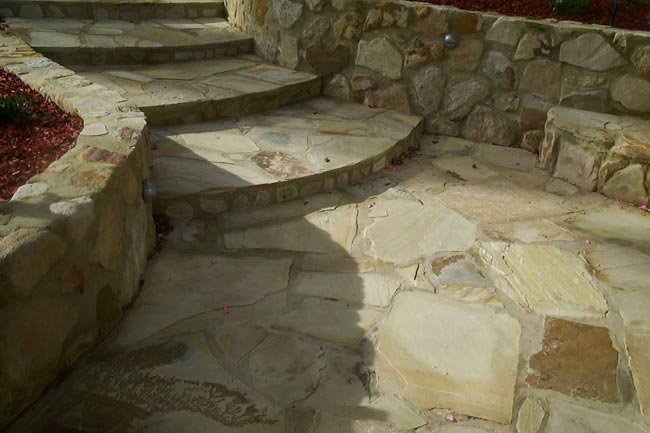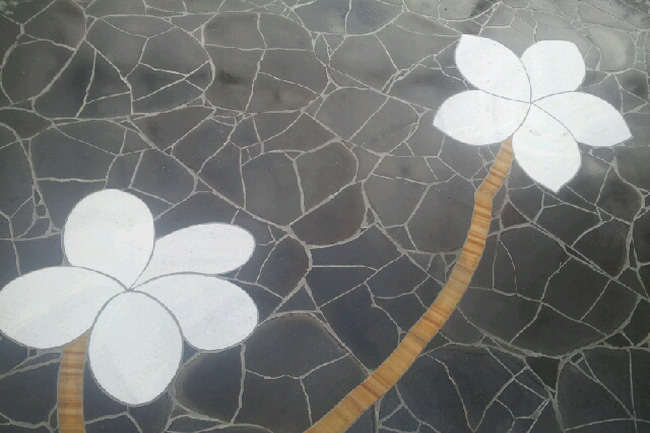Paving Sandstone Melbourne: The Best Property Addition
Melbourne’s property owners are using natural paving sandstone Melbourne to elevate their outdoor look. Homeowners and business owners prefer sandstone for their outdoor spaces for an elegant appearance. It meets the diverse outdoor living needs and climatic conditions. With expert advice and professional installation, you will get outdoor spaces that will impress the visitors and guests. Enhance curb appeal of your property with a timeless, elegant finish. This paving material will add long-term investment value due to durability and aesthetics. It offers a wide range of sandstone options tailored to your design and functional needs.
Sandstone Paving Cost in Melbourne: What to Expect
Paving sandstone Melbourne prices depends on many factors. These are as follows:
• Cost depends on stone type, quality, and finish.
• Project size and site preparation impact pricing.
• Complex patterns and custom cuts increase labour costs.
• Professional installation ensures long-term value.
Why Choose Sandstone for Paving in Melbourne?
Sandstone pavers near me are a popular natural stones. It is perfect for outdoor paving in your Melbourne’s properties. Here’s why:
• Natural Beauty:
o Earthy tones and unique grain is ideal for organic outdoor look.
o Each slab is one-of-a-kind, it adds character to your outdoor space.
• Durability:
o Resistant to chipping, cracking, and wear caused by foot traffic and weather.
o Performs well under Melbourne’s varied climate, including heat and rain.
• Slip Resistance:
o Naturally textured surfaces provide excellent traction.
o Ideal for wet areas like outdoor kitchens and pool surrounds.
• Versatility:
o Suitable for multiple outdoor applications including garden edging, patios, pathways and driveways.
o Complements both modern and traditional landscaping styles.
• Eco-Friendly:
o Natural, sustainable stone reduces carbon footprint.
o Easily recyclable and long-lasting, reducing waste over time.
Benefits of Sandstone Paving for Melbourne Homes
Premium quality sandstone crazy paving is great for Melbourne’s unpredictable climate and vibrant lifestyle. Limestone paving Melbourne is also a durable and versatile solution for your property.
Long-Lasting Durability
• Resistant to wear and tear from heavy foot traffic.
• Maintains structural integrity for many years.
Weather Resistance
• Can withstand extreme climatic conditions and temperature swings.
• Does not fade or deteriorate even after continued usage.
Low Maintenance
• Requires sealing and periodic cleaning.
• Naturally resists moss and algae growth.
Enhances Outdoor Living Spaces
• Creates inviting, comfortable areas for entertaining.
• Adds texture and warmth with outdoor furniture.
Sustainable Material
• Natural stone harvesting with low environmental impact.
• Durable products reduce need for frequent replacement.
Sandstone Paving vs Other Paving Materials
Natural aesthetics and timeless beauty of sandstone pavers, outdoor makes it a perfect choice. Invest in good quality natural stone to make your property stand out from the rest.
Feature
Natural Look
Durability
Maintenance
Slip Resistance
Heat Retention
Cost
Eco-Friendly
Sandstone Paving
Yes, unique textures and tones
High
Low
Good
Low to Moderate
Moderate to High
Yes
Concrete Pavers
No, more uniform
Moderate to High
Moderate
Varies
High
Low to Moderate
No
Brick Pavers
Yes, rustic look
Moderate
Moderate to High
Good
High
Low to Moderate
Partially
Installation Process of Sandstone Paving in Melbourne
With professional installation of sandstone look pavers, you will get a flawless appearance for years. Here’s an overview of the typical installation steps followed by professionals:
1. Site Preparation
• Clear vegetation, debris, and old materials.
• Level and compact soil for a stable base.
2. Base Layer Installation
• Lay crushed rock or gravel for drainage.
• Compact the base for strength and stability.
3. Sand Bedding
• Spread a layer of sharp sand as a bedding layer.
• Ensures even placement and support for sandstone slabs.
4. Laying the Sandstone
• Arrange slabs according to the chosen pattern.
• Maintain consistent joint widths using spacers.
5. Joint Filling
• Fill joints with fine sand or polymeric sand.
• Locks paving firmly in place.
6. Cleaning and Sealing
• Remove dust and debris after installation.
• Apply sealant to enhance colour and protect surface.
Maintenance Tips for Sandstone Paving Melbourne
The best way to maintain sandstone pavers Bunnings is with regular maintenance and upkeep. Here are the valuable tips:
Avoid Harsh Chemicals
• Use pH-neutral stone cleaners only.
• Avoid bleach, vinegar, or acidic products.
Sealing
• Seal every 2-3 years for stain protection.
• Use high-quality stone sealers designed for sandstone.
Weed Control
• Remove weeds and moss from joints regularly.
• Apply eco-friendly weed treatments if necessary.
Addressing Repairs
• Replace broken or damaged slabs promptly.
• Consult professionals for structural or drainage problems.
Why Choose Professionals for Sandstone Paving in Melbourne?
Cheap paving sandstone Melbourne should be installed by skilled and experienced professionals. When you choose experts, you will enjoy:
• Expert Guidance on material selection, patterns, and finishes.
• Certified Installation Teams delivering precision and durability.
• Competitive Pricing without compromising quality.
• Customer-Focused Approach with personalised consultations.
• Eco-Conscious Practices ensuring sustainable sourcing and installation.
• Comprehensive Aftercare Support including maintenance advice.
Popular Sandstone Paving Patterns to Consider
With the affordable paving sandstone Melbourne cost, you can get the best paving for your outdoor area.
• Random/Irregular Pattern
o Natural, organic appearance with varying slab sizes.
o Perfect for rustic and cottage-style gardens.
• Ashlar Pattern
o Clean, geometric layout with rectangular slabs.
o Suits modern and minimalist outdoor designs.
• Herringbone Pattern
o Strong zigzag layout for visual interest and strength.
o Popular in both traditional and contemporary settings.
• Basket Weave Pattern
o Alternating pairs of slabs creating a woven effect.
o Adds classic charm to pathways and patios.
• Circular/Radial Patterns
o Curved designs around focal points such as trees or water features.
o Creates unique and elegant outdoor spaces.
Transform Your Outdoor Space with Paving Sandstone Melbourne
Paving sandstone Melbourne’s resilience and natural charm makes it a sustainable choice for Melbourne homes. Hence, the outdoor paving project will exceed your expectations. Ready to upgrade your outdoors? Contact Domko today for a free consultation and discover the perfect sandstone paving options for your home!
Frequently Asked Questions About Sandstone Paving Melbourne
Q1: Is sandstone paving ideal for pool areas?
Yes, its slip resistance and cool surface make it ideal.
Q2: How long does sandstone paving last?
Typically 20+ years with proper care.
Q3: Can sandstone be sealed?
Yes, sealing protects against stains and weather.
Q4: Does sandstone require much maintenance?
Minimal; frequent cleaning and occasional sealing suffice.
Q5: Is sandstone an eco-friendly option?
Yes, it’s a natural and environmentally friendly material.
Q6: How do I prevent weed between sandstone joints?
Use of polymeric sand and cleaning prevents growth.
Q7: Can sandstone handle heavy vehicles on driveways?
- Certain dense sandstones can, but consult experts for suitability.


